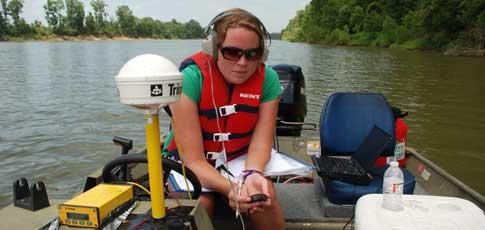Wasteload Allocation

A wasteload allocation study was conducted to determine the Total Maximum Daily Load of the Conecuh (AL)/Escambia (FL) River that flows into Pensacola Bay. USEPA, Region 4 and the Florida Department of Environmental Protection (FDEP) prepared a nutrient TMDL for Escambia Bay and cited the pulp and paper mill, and the City of Brewton, located in Alabama, as major contributors of nutrients to Escambia Bay, located in Florida.
AquAeTer conducted a waste assimilative capacity study of the River from Brewton to Escambia Bay, a distance of about 70 miles. Sediment oxygen demand (SOD) measurements were made and water samples including time-series BODs and nutrient data were collected with dye time of travel in order to establish kinetic river rates. Flow measurements and monthly low-flow analyses were determined. All known point sources were included in the study including a downstream publicly owned treatment works discharge. A fisheries survey was completed for fish tissue analysis using electro-shocking techniques. Chlorophyll pigments were identified using high density liquid chromatography (HPLC) to accurately determine chlorophyll species since Florida was potentially going to set chlorophyll limits in the bay. Water samples were collected and sent to the laboratory for algae speciation. The nutrient data collected demonstrated that the nutrients leaving Alabama were within the nutrient limits being proposed for Escambia Bay. Additionally, the time-series BOD data demonstrated that about 50% of the organic nitrogen and 50% of the organic phosphorous were recalcitrant and were not available for use by the algae.
The source for nutrients in Escambia Bay is believed to be coming from failing septic systems and other non-point sources that are along the upper bay area.
AquAeTer provided the following services to its client for this sampling and reporting project:
- Water quality measurements were made for water temperature, dissolved oxygen, pH and conductivity using global position system (GPS)
- Measured rate of deoxygenation in the River for ultimate carbonaceous biochemical oxygen demand (CBODu) and nitrogenous biochemical oxygen demand (NBOD)
- Compared analytical methods for determination of chlorophyll
- Showed that the claim that large nitrogen loadings were from sites in Alabama was false
- Showed that roughly half of the nutrients discharged by the Mill were unavailable (recalcitrant) in any reasonable length of time



